How much can China's land ecosystem absorb carbon dioxide?| Academician Park Shilong
Author:Institute of Geological Earth Time:2022.08.01


"
The national forest coverage rate from 12%in the early 1980s,
Raise to 23%now,
We are the largest country in the world, the largest artificial forest area,
It accounts for about 25%of the global artificial forest area.
Park Shilong · Academician of Chinese Academy of Sciences
Gezhi Tao Tao 83 | June 25, 2022 Beijing
Hello everyone, I am honored to exchange some research progress on the carbon circulation and carbon collection and expenses of China's ecosystems in Gezhi Tao. The content of my report today is "The Status and Potential Situation and Potential of China's Land Ecosystem".
Human activity is the main cause of contemporary climate change
During the carbon cycle of the global ecosystem before the industrialized revolution, on land, vegetation absorbs carbon dioxide in the atmosphere through photosynthesis, and discharged part of carbon to the atmosphere through self -care. In addition, we know that there are not only vegetation in the ecosystem, but also soil. The organic matter of the soil is decomposed by microorganisms in the soil and discharged into the atmosphere through heterotreach. Therefore, when there is no human interference, the amount of vegetation ecosystem absorbed through photosynthesis and the amount of discharge basically reached balance.
The ocean is also a similar process. There are some carbon horizontal exchanges between land and the ocean. In addition, we should pay attention to the fire in nature. After the fire occurs, a large amount of carbon will be discharged into the atmosphere. These are the situation before the industrialized revolution.
However, after the industrialized revolution, humans discharged underground carbon into the atmosphere through the method of burn fossil fuel; before the industrialized revolution, these carbon did not participate in the modern carbon cycle. In addition, the area of farmland in tropical areas is not enough, so it will also open up farmland through forest cutting, which will also cause a large amount of carbon discharge into the atmosphere. Therefore, at present, the combustion of fossil fuels and changes in land use, these two methods are the main way for global carbon dioxide concentration.
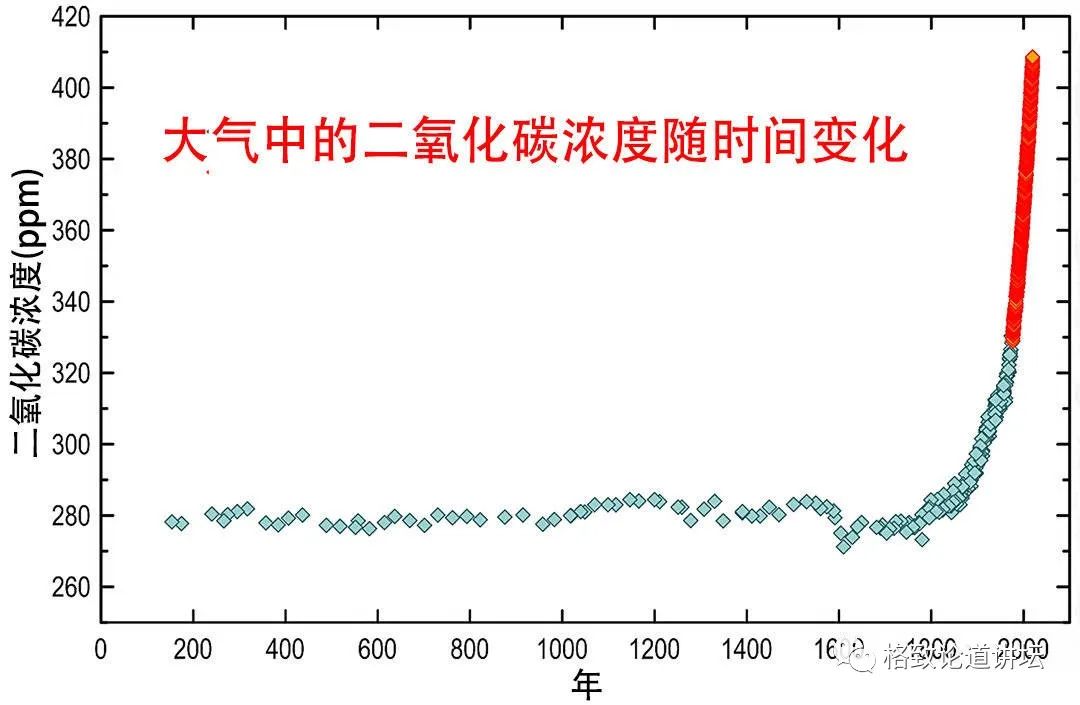
Data source: csiro
From the figure above, we can see that in the history of the past two thousand years, the increase rate of carbon dioxide concentration in the atmosphere after the industrialized revolution is very fast. Activity is the main reason for contemporary climate warming.
From the IPCC's first evaluation report in 1990 to the 6th evaluation report in 2021, it can be seen that the conclusion of the conclusion of "human activity is the main cause of contemporary climate warming" is gradually increasing, and in the first place In the 6 evaluation report, it mentioned a little: Needless to doubt that the impact of human activities has caused atmosphere, ocean and land to warmer.
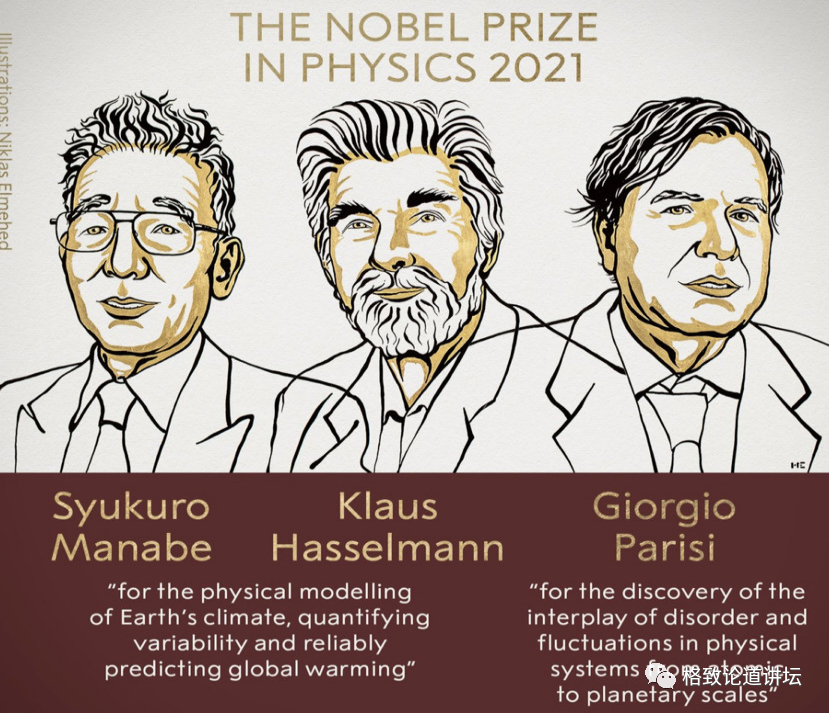
Left: Syukuro Manabe
Middle: Klaus Hasselmann Source: The Nobel Committee
Speaking of this conclusion, we have to mention the two outstanding scientists -American scientists Shimuo Shulang and German scientist Claus Hasselman. The two scientists won the Nobel Prize in Physics in 2021 due to their contributions in global climate change. Zhenxu Shulang "laid the foundation of the earth's climate change and the influence of human influence on it." He used the three -dimensional model to estimate the impact of the rising carbon dioxide concentration on the earth system. Another scientist's award -winning reason is in the aspect of "the physical simulation, quantitative mutation, and reliable prediction of global warming", especially his method of developing detection attribution. Most of the climate warming at present comes from human activities.
What should we do?
Completed: 20%///////// We often ask how big human activities are in the entire earth system. IPCC has made three different predictions on the scene of the future carbon dioxide concentration, including low low, including low low, including low low Eat scenes, mid -discharge scenarios, high emission scenarios.
If it is a high -emissions scene, the carbon dioxide concentration can reach the concentration of the Baiji period. How terrible the Dinosaur era we often said in the dinosaur era, which we often said. If it is a mid -emission scene, the Arctic and Antarctic have no ice sheet. If you are under low -emission scenarios, the Arctic will basically be a small ice cover. Therefore, the changes in such a large -scale carbon dioxide concentration will definitely cause significant changes in the climate and ecosystem.
Therefore, since 1992, the international community has conducted a large number of negotiations on the climate. In 2015, the Paris Agreement was reached, and the 2016 Paris Agreement officially took effect. There are three goals in the Paris Agreement. The first goal is to control the global average temperature increase within 2 degrees before the level of the industrialization revolution. We must remember that it is not to leave the present, but before the industrialized revolution, and strive not to exceed 1.5 degrees before the industrialized revolution; the second goal is to improve the ability to adapt to the adversely impact of climate change, and to enhance it in a way that does not threaten grain output production. Climate adaptability and low emission paths for developing greenhouse gases; the last goal is to make the flow of funds comply with the path of low emissions and climate adaptive development of greenhouse gas.
Global carbon dioxide total emissions schematic diagram (IPCC, 2021)
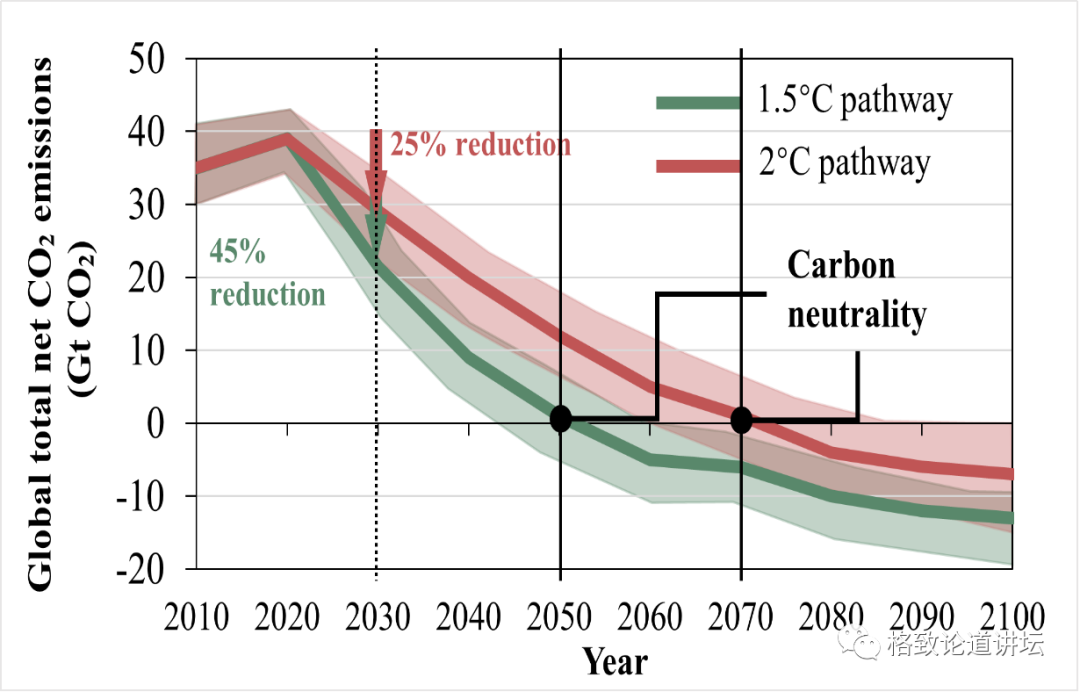
So, how do we go to achieve the goals of 2 and 1.5 degrees in the Paris Agreement? If you want to achieve a 1.5 -degree goal, the amount of carbon dioxide in 2030 needs to be 45%decreased compared to 2010, and the net zero emissions should be achieved around 2050; if we want to achieve 2 degrees of target, we need to be around 2070. Realize net zero emissions.
Global Climate Chart of 1850-2016 (IPCC, 2021)
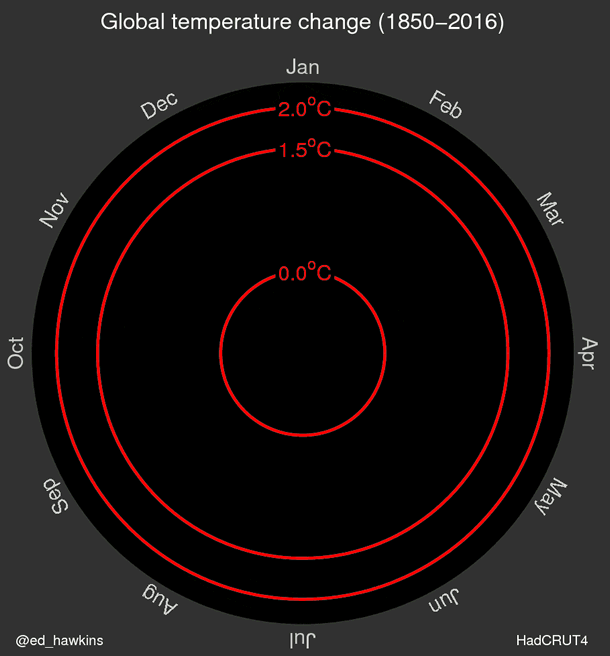
From the figure above, we can see that the current temperature is almost 1 degree, so we do n’t have much room for the goal of 1.5 degrees or 2 degrees.
Picture source: IPCC, 2021
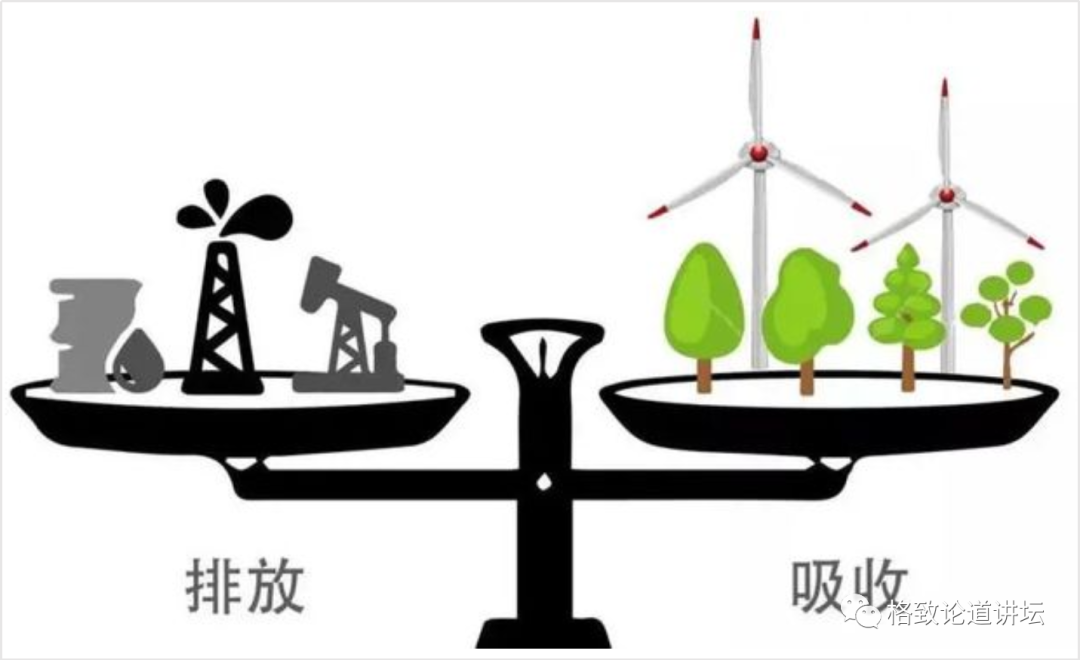
There is a clear concept for carbon neutrality in IPCC. It refers to the net zero -emissions of carbon dioxide by balanced carbon dioxide human emissions and artificial removal. What is emphasized here is artificial removal, not just relying on the elimination of natural carbon dioxide emissions. In other words, the carbon we absorbed and emitted should be balanced, so that the carbon dioxide concentration in the atmosphere has not increased. In 2020, our country promised at the 75th session of the United Nations that carbon emissions reached its peak in 2030, and in 2060 to achieve the neutrality of carbon.
We often mention that carbon dioxide in the atmosphere is a long life gas. How much responsibility does China take on the phenomenon of global warming? Teacher Li Bengang from Peking University and us published data on the Nature and the American Academy of Sciences (PNAS). Our conclusion is that China ’s contribution to the current climate warming is only about 9%, while the United States is about 22%, and Europe is about 14%. Therefore, for the current climate warming, the contribution of our country is relatively small. Essence But we are a responsible country, so we also proposed the goal of carbon neutrality.
At present, the emissions of carbon dioxide in our country are about 10 billion tons. From now to 2060, how can we reduce carbon emissions to zero? We have three ways. The first is that we need to reduce emission reduction, greatly emission reduction, and use some sustainable energy sources to replace the current fossil fuel; the second is carbon capture, use and sealed The carbon dioxide in the atmosphere is buried in the depths of the ground; there is another way to use land and ocean carbon exchange to achieve carbon neutrality.
Significant emission reduction is a very big challenge for our country. This is because my country has only 30 years from carbon peaks to carbon neutralization, and the United States is 43 years and the European Union is 71 years. Therefore, our emission reduction pressure is very high.
The important role of carbon exchange for land ecosystems
Completed: 40%///////////
Today I am talking about carbon exchange in land. Can the carbon exchange of land can play such a big role in achieving the goal of carbon neutralization?
Data Source: noAA
This video is a change in the carbon dioxide concentration of different carbon dioxide concentration observation stations. The horizontal coordinates are the latitude of this site distributed. We can see that the carbon dioxide concentration is gradually rising, but the rising law of each site is different. In the southern hemisphere and equatorial areas, the concentration of carbon dioxide rises steadily. After winter, its concentration is very high. What are the main reasons? Because in the summer, the ecosystem has absorbed a large amount of carbon. So we can see that the land ecosystem does play a role that cannot be ignored in slowing the rise of greenhouse gas concentrations.
The global carbon plan will evaluate the global carbon revenue and expenditure of the world in the past 10 years. From 2011 to 2020, we have emitted about 40 billion tons of carbon dioxide, but only 48%have accumulated in the atmosphere, and the remaining 26 are 26 respectively %Are absorbed by land and ocean.
What needs to be emphasized is that I gave the remaining carbon exchange in the land ecosystem. Why? Because our land space is too complicated and the heterogeneity is too large, there is no good way to fully estimate how the global land carbon remittances are. Therefore, during the global carbon plan, we calculated the total emission volume, and then calculated the part of the atmospheric ecosystem. The part of the marine ecosystem was calculated, and then the rest should be part of the global terrestrial ecosystem. But this will cause a problem, that is, the amount of carbon exchange in land ecosystems will be affected by the estimated accuracy of several other parts. If we overestimate other parts of the emissions, then the carbon exchange of land may be overestimated.
Two key issues of global carbon cycle research
We can also calculate the global carbon exchange, but if we go to a certain area, we cannot use this indirect method to calculate. So there are two core issues of the global carbon plan. Where is 26%of carbon distribution? Distributed in the United States or in China? This is a core issue. Another core question is how carbon exchange changes with time? Will it increase in the future, such as increased to 40%or 50%? We certainly hope that the future carbon exchange will increase, which is very beneficial to our carbon neutrality.
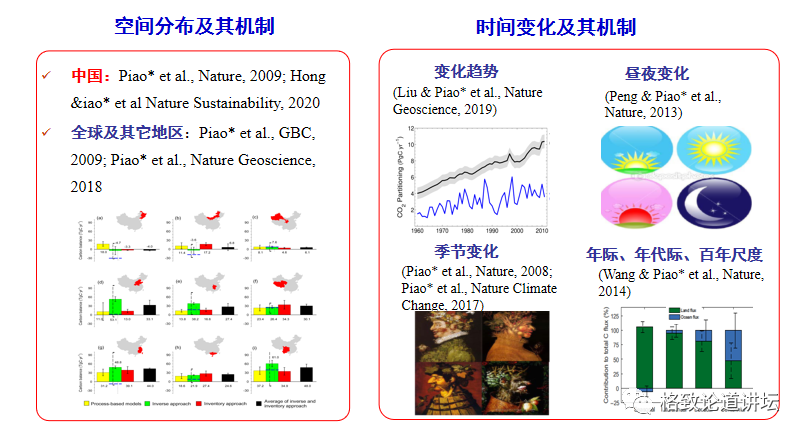
What are the factors that affect China's land carbon exchange?
Completed: 60%///////////
In the past 20 years, our research team conducted research on these two core issues. Next, I will focus on the research on China's carbon collection and expenses.
Why do we study carbon revenue and expenditure in this area? This is because the carbon emissions and absorption of regional carbon dioxide concentration in global atmosphere can help determine the policy of carbon compensation and slowing down. For example, as mentioned in the "Kyoto Protocol", if a country absorbs more carbon through afforestation, it has the right to discharge the corresponding carbon.
Therefore, with the support of the Ministry of Science and Technology and the Fund Commission, our country has carried out a large number of research in the past few decades, and also provided key scientific support for my country to achieve carbon neutrality and participation in global climate governance.
Let's take a look at the influence factors that affect the revenue and expenditure of the region. The first is the change in land use. In the past 50 years, the area of the construction area of 75 cities in my country has increased by about 7 times. You can see if your city area has changed. For example, we can see that the area of Jilin City is basically unchanged, and the area of Shenzhen is very large. This urbanization expansion will destroy natural vegetation and cause carbon reserves loss.
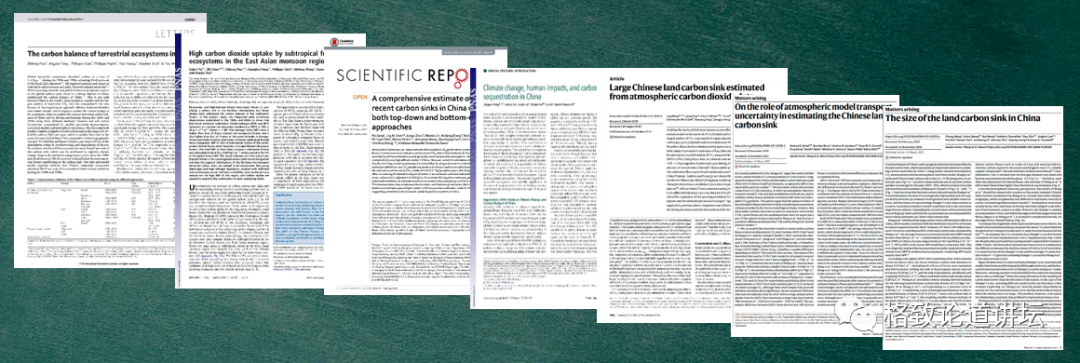
Another important feature of China's urbanization is that the rural population moves towards the city. This phenomenon will be relatively less damaged to vegetation in rural areas, which is conducive to the absorption of carbon absorption of vegetation in rural areas. In addition, our country has carried out a large number of ecological projects in the past few decades, including northern Shaanxi protective forests. The national forest coverage rate was increased from 12%in the early 1980s to 23%, and the forest accumulation was increased to 17.5 billion cubic meters. We are the largest country in the world, accounting for about 25%of the global artificial forest area. Therefore, a large number of tree -planting afforestation work in my country is conducive to land carbon absorption and the carbon exchange function of the ecosystem. But on the other hand, we also experience climate change. From 1901 to 2020, the average temperature of our country increased by 0.1 degrees every 10 years. On the one hand, temperature changes are conducive to carbon absorption in the ecosystem and extend the time of the growth season; but on the other hand, it is not good, because it will accelerate the breathing of the ecosystem, such as accelerating the breathing of plants and the decomposition of soil organic matter. Therefore, the rise of temperature on the carbon cycle of the Chinese ecosystem will have great uncertainty now.
In addition to temperature changes, the precipitation pattern of our country has also changed. Our country is now undergoing the problem of southern floods. If we see the changes in precipitation in the past decades, we can find that the rainfall in the south of my country has increased, and the rainfall in the northern region decreases. The north is originally lacking, so for vegetation growth, the decline in rainfall is not conducive to the absorption of ecosystem carbon absorption.
Although rising carbon dioxide concentration can cause climate warming, it is beneficial to vegetation. why? We know that carbon dioxide is a substrate for photosynthesis, and the substrate for photosynthesis is increased, and the rate of photosynthesis will be strengthened. At present, remote sensing data found that the global vegetation growth rate increased significantly, and the increase in the area of the leaves was probably equivalent to the area of Amazon Rainforest. Scientists believed that this phenomenon was caused by rising carbon dioxide concentration.
In addition, the settlement of nitrogen in the atmosphere can also help the absorption of carbon in the ecosystem. For the growth of vegetation, nitrogen lacks in the soil of the entire northern hemisphere, so farmers often apply nitrogen fertilizer to increase the output of crops. Therefore, the nitrogen settlement of the atmosphere can also lead to the improvement of the productivity of vegetation, which is conducive to the carbon absorption of the ecosystem.
Another influencing factor is air -soluble gum, which is the haze we often mention. Haze is not good for human health, but the current research shows that haze is beneficial to the growth of vegetation and carbon exchange for ecosystems. Teacher Liu Lingli, like the Chinese Academy of Sciences, found that on the cloudy days, the efficiency of the light of vegetation can be improved, and the productivity is better. There was also around 1991-1992. In fact, the carbon emissions of our artificially were greater than the 1970s and 1980s, but the carbon dioxide concentration in the atmosphere basically did not increase. What is the reason? In fact, this has something to do with the outbreak of Pinatobo volcano in the Philippines in 1991. After the outbreak of the volcano, a large amount of air -soluble gum increases, which is conducive to the growth of vegetation. Therefore, the carbon dioxide concentration in the atmosphere has not increased.
Then our problem is that the climate changes, the use of land use changes, and the atmospheric components have changed. Under this multiple pressure, is the Chinese ecosystem carbon exchange or carbon source? If it is a carbon exchange, it can offset how much carbon dioxide emissions in our country's industrial emissions?
In order to answer this question, we have several methods. The traditional method is to go to the wild and dig a soil to see how much the carbon reserves there are. Now there are some new high -tech methods. Teacher Yu Guirui of the Chinese Academy of Sciences Geography, they use vortex -related technology to estimate the ecosystem carbon exchange, and some are based on satellite data estimates. Another method is to use the observation data of atmospheric carbon dioxide concentration for countermeasure models to counter -discrimination model Essence In this study, we use traditional ground observation and atmospheric anti -model methods. Different remote sensing data show that the overall trend of vegetation in our country is better. In "Nature Sustainability", there is an article I involved in it that the current rate of greening in China is greater than the world's average rate. It is tied to the world's first place, and the second place is India. The production of high -heeled crops in India's greening rate is related to the production of high -heeled crops, and our country is mainly inseparable from ecological engineering trees. In addition, after the climate warming, the advancement of the vegetation leaf in advance or the delay of fallen leaves will lead to increasing carbon absorption, which is conducive to the ecosystem carbon exchange.
Picture source: piao et al., 2009 nature; Park Shilong, 2022, Chinese science
The picture above is the situation of carbon syndicates of different ecosystems such as forests, grasslands, farmland, shrubs, lakes and bamboo forests that we currently estimate. What we want to emphasize is that although the output of crops in farmland increases a lot, because this part of carbon is quickly consumed, its turnover is very fast, so we do not think about this part.
In general, China's carbon exchange is about 120 million tons per year, which is a method based on ground observation data and remote sensing data. The data estimated by another atmospheric counter -and method is about twice the time, about 3.5, and one is 2.0.
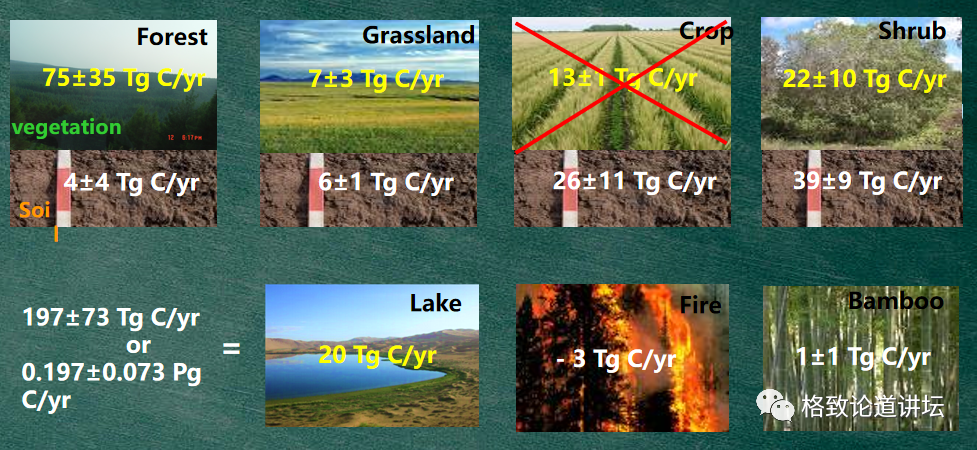
The atmospheric countermeasure model and the estimation results based on ground observation data are more schematic
(PIAO et al., 2009 nature; Park Shilong, 2022, Chinese science) But these two methods cannot be directly compared. Atmospheric reversal is calculated based on the carbon dioxide concentration observation. The carbon lost in the ecosystem is not just carbon dioxide It also has some oxidation sub -carbon and volatile organic matter, so these carbon also needs to be considered. In the past few decades, our country has introduced a large amount of wood and food. This carbon is not the loss of carbon in our ecosystem, so we need to compensate this carbon when calculating.
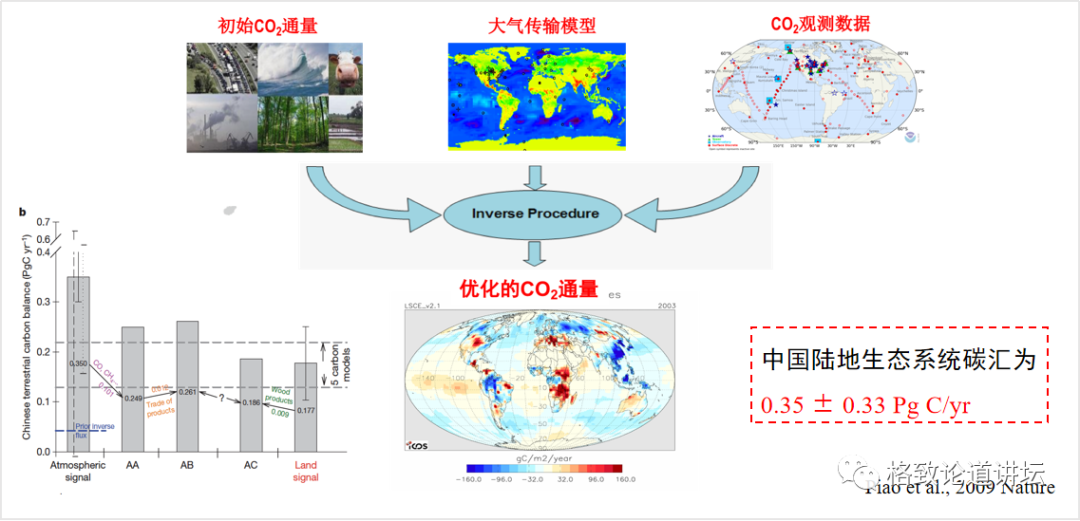
In addition, many of us think that these carbon will reach the atmosphere after the forest cuts down. In fact, no, these carbon that made furniture after the forest fell on the ground. So after we added these carbon, the ground observed about 210 million tons of carbon, and the result of the atmospheric countermeasures was about 260 million tons of carbon.
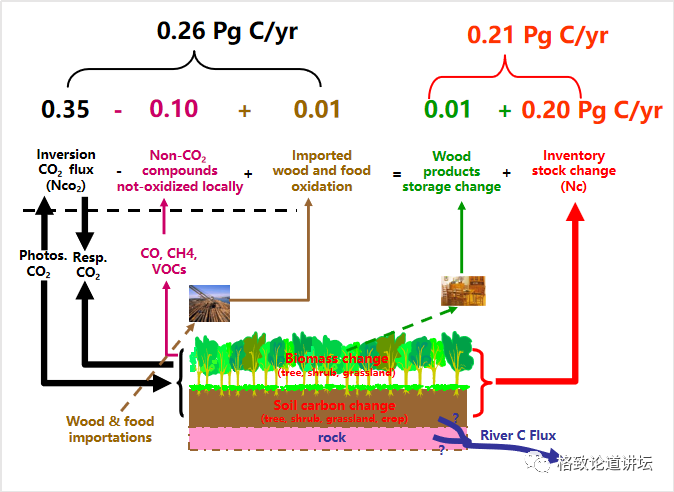
Left: Chinese land carbon exchange size
Right: Chinese land carbon exchange accounts for the percentage of Chinese fossil fuel burning carbon emissions during the same period
(Park Shilong, 2022, Chinese science)
On the left is this year we collected the picture obtained from the current Chinese land ecosystem carbon exchange estimated by different research groups. We can see that most studies have shown that China's carbon exchange size is about 17-350 million tons per year. So how much can we offset our industrial emissions? In the 1980s, our industrial carbon emissions were relatively low, so we could offset about 30%, but in the past few decades, our industrial carbon emissions have increased significantly, so about 7%-15%of the current currently offset about 7%-15% Essence
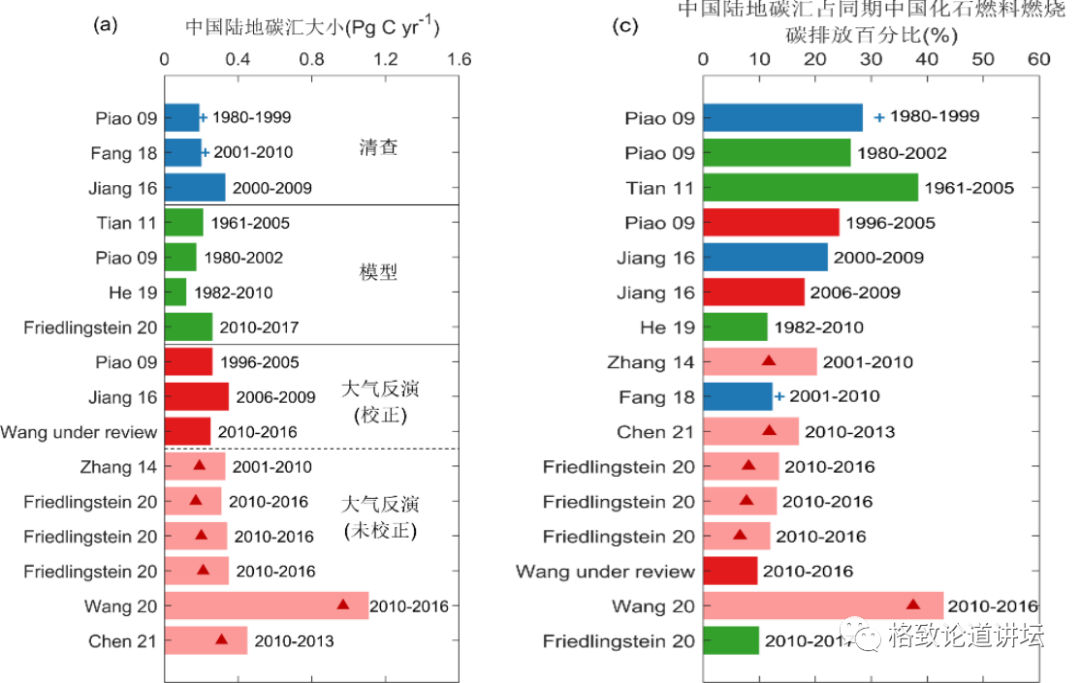
How much potential does the land ecosystem have in the future?
Completed: 80%///////////
Many people will ask, what is the potential of our ecosystem in the future?
Picture source: yao piao* et al., 2018 scientific notice
It should be emphasized that the age of our tree planting is relatively short, so the forest resources of our country are basically the main forests, which is about 61%of the entire forest area. After these forests grow, its carbon exchange potential is considerable. We estimate that after the next 30 years, the reserves of carbon exchange can increase by about 900-1 billion tons. In addition, many of our grass ecosystems are degraded. If these ecosystems can be restored, it may also increase the carbon exchange potential of our ecosystem. Of course, this also has certain risks.
The risk comes from the frozen soil of the Qinghai -Tibet Plateau, because a large amount of carbon is stored in the frozen soil, accounting for one -third of our country's soil. Therefore, after the climate warming in the future and the acceleration of frozen soil, these carbon will be discharged into the atmosphere, which may increase warming. Research on these aspects needs to be strengthened.
Left: European drought
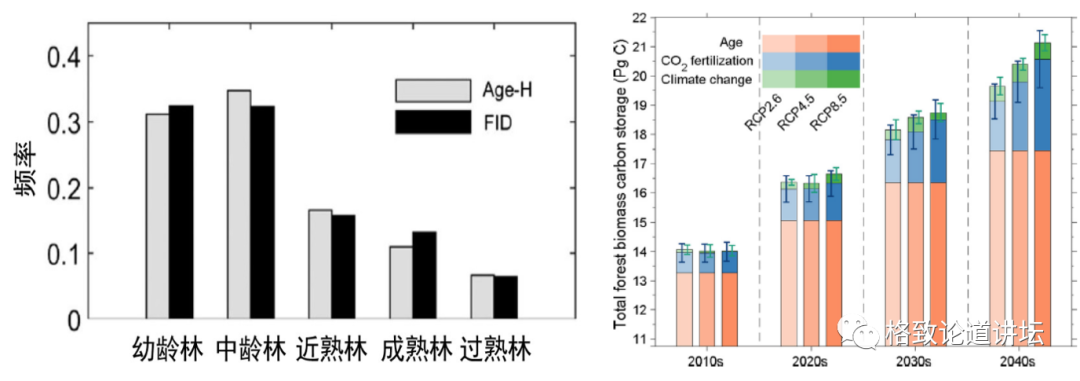
Right: land and marine carbon exchange change map
(Park Shilong et al., Chinese science, 2019)
In addition, we must pay attention to extreme climate events. Extreme climate events will also have a significant impact on ecosystem carbon exchange. From the graph on the right, we can see that the annual increase of the annual carbon dioxide concentration in the atmosphere is basically these years when extreme climate events occur. For example, like the drought in Europe in 2003, and El Niho in 1998, after these extreme climate occurred, the carbon exchange absorption capacity of the ecosystem decreased significantly, which led to a significant increase in the carbon dioxide concentration in the atmosphere.
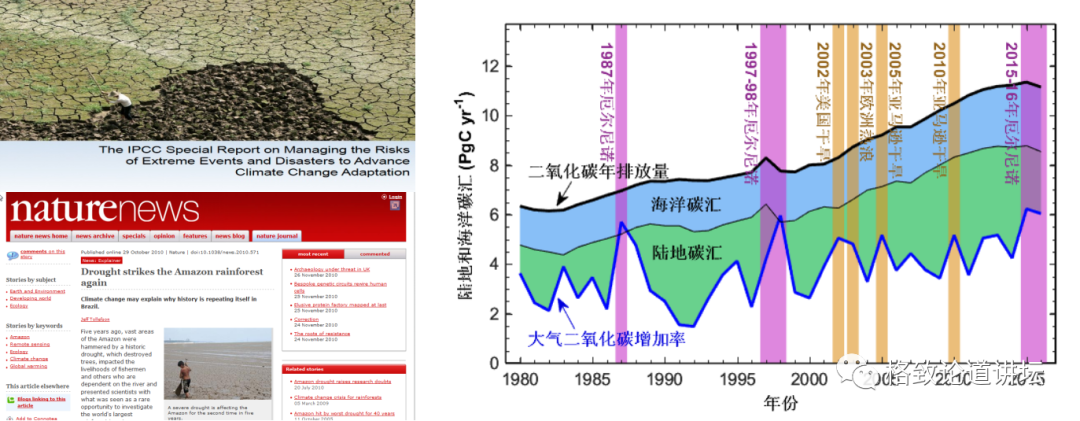
Picture source: Park Shilong et al., Chinese science, 2022
In the long run, what is the role of land ecosystem carbon exchange in the "carbon neutral" strategy? I want to emphasize that the ecosystem carbon exchange is like a container, and now it is a process of continuous full, that is, the process of carbon exchange. However, one day this container may never be installed again, so we must make this container bigger. If the container does not grow, but keeps in the status quo, the ecosystem will reach carbon balance sooner or later.
From the graph on the right, we can see that with the arrival of 2100, the carbon exchange capacity of the forest ecosystem is currently declining significantly. Therefore, our current tree -planting afforestation and forest management are very necessary. How to extend the time of the carbon remittance window period, when to make afforestation, and where is afforestation, which requires comprehensive planning.
Picture source: Park Shilong, 2022, Chinese science

To plan this, we need to build a sustainable management system for carbon exchange in China's land ecosystem. At present, the land ecosystem can be measured, reported, and can be checked, which is an important foundation for formulating my country's emission reduction policy. In this system, we need multi -data, multi -processes, multi -scale, and multi -method integration to build a sustainable management system for Chinese ecosystems that integrated sky and land.
thank you all !
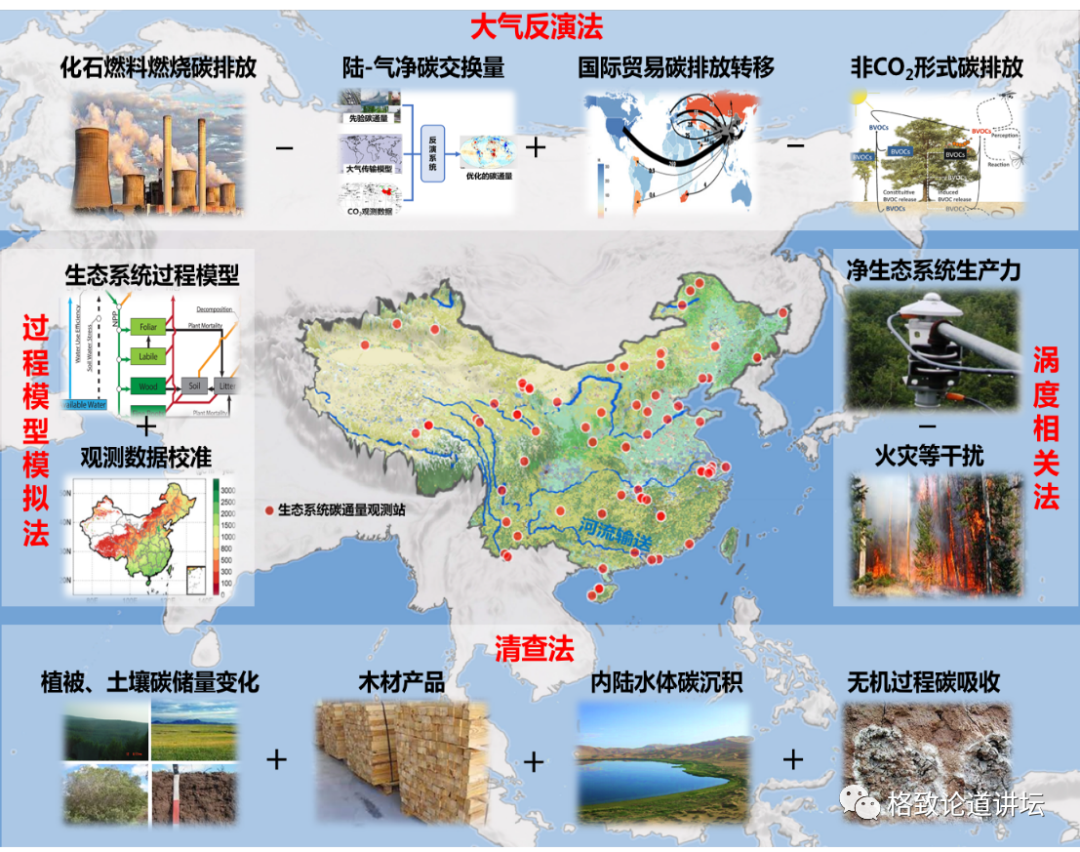
- END -
The "immersive" experience, Xinwan improves corporate disaster prevention and mitigation skills

June this year is the 21st National Safety Production Month. In order to enhance t...
Extend the supervision "probe" to the grass -roots level to help rural revitalization
The depth of these ditches is not enough, at least 20 cm in digging. In addition, there are hidden safety hazards in the abandoned stones piled up by the village road. Li Zhengshan, a liaison member